THE SECRET WEAPON FOR SELLING PRESTIGE PROPERTY
Developers, architects and agents are turning to contemporary Australian art to make their properties stand out from the crowd
Developers, architects and agents are turning to contemporary Australian art to make their properties stand out from the crowd
When architect Phillip Mathieson first walked members of Third.i property group through the interiors he had designed for their Kurraba Point “super penthouse”, there were a few raised eyebrows. It wasn’t the million-dollar kit-out of furniture and decor by French luxury brand Liaigre that was disconcerting his clients — it was the art. Not the Brett Whiteley linocut of a dove, or the intricately patterned larrakitj (memorial pole) by Yolngu artist Malaluba Gumana, but the yellow mirrored work by young queer artist Tay Haggarty, which appeared to be pinioned to the wall by four white socks.
Find more stories like this in the latest issue of Kanebridge Quarterly magazine, Australia’s best resource for property, money and living. Order your copy here.
Mathieson, whose architecture firm was charged with the interiors for all 24 residences in Third.i’s new Sydney Harbour-side development (including 21 harbourfront apartments and two sub-penthouses), was given free rein on choosing the art for the penthouses, and engaged the expertise of Artbank: a governmental body whose collection of more than 10,000 Australian artworks spans from the 1920s to now, all available to lease. In the super-penthouse, the selection includes a monumental work in black Belgian marble by the late Melbourne artist Joel Elenberg (who smashed the sales record for Australian sculpture in August 2023 with a similar work, which sold for $925,000) and a mix of abstract and figurative works by significant artists such as Bronwyn Oliver and Marion Borgelt.
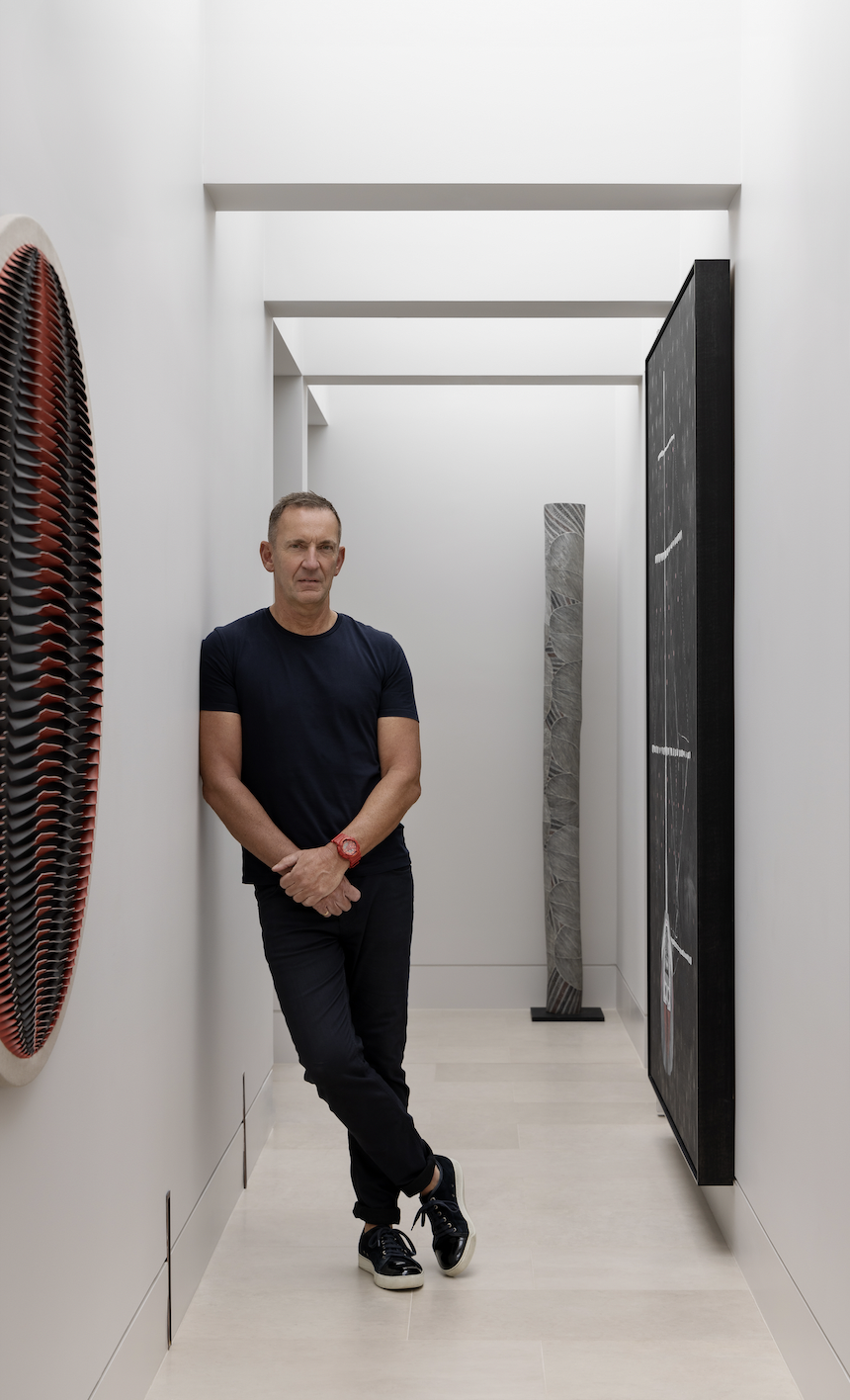
Amongst these, Haggarty’s piece stands out: “It’s quite a controversial piece to have in there, given that it’s a very high end development,” says Artbank consultant Carey Corbett, who worked closely with Mathieson Architects to select the works. “I imagine the expected clientele is not so familiar with their work, being a younger artist — and possibly not the sort of artist that some of those prospective buyers would have in their homes.”
But Haggarty’s piece, titled Sun on Bare Back, provides a moment of delicious, cheeky dissonance within the elegant surroundings.
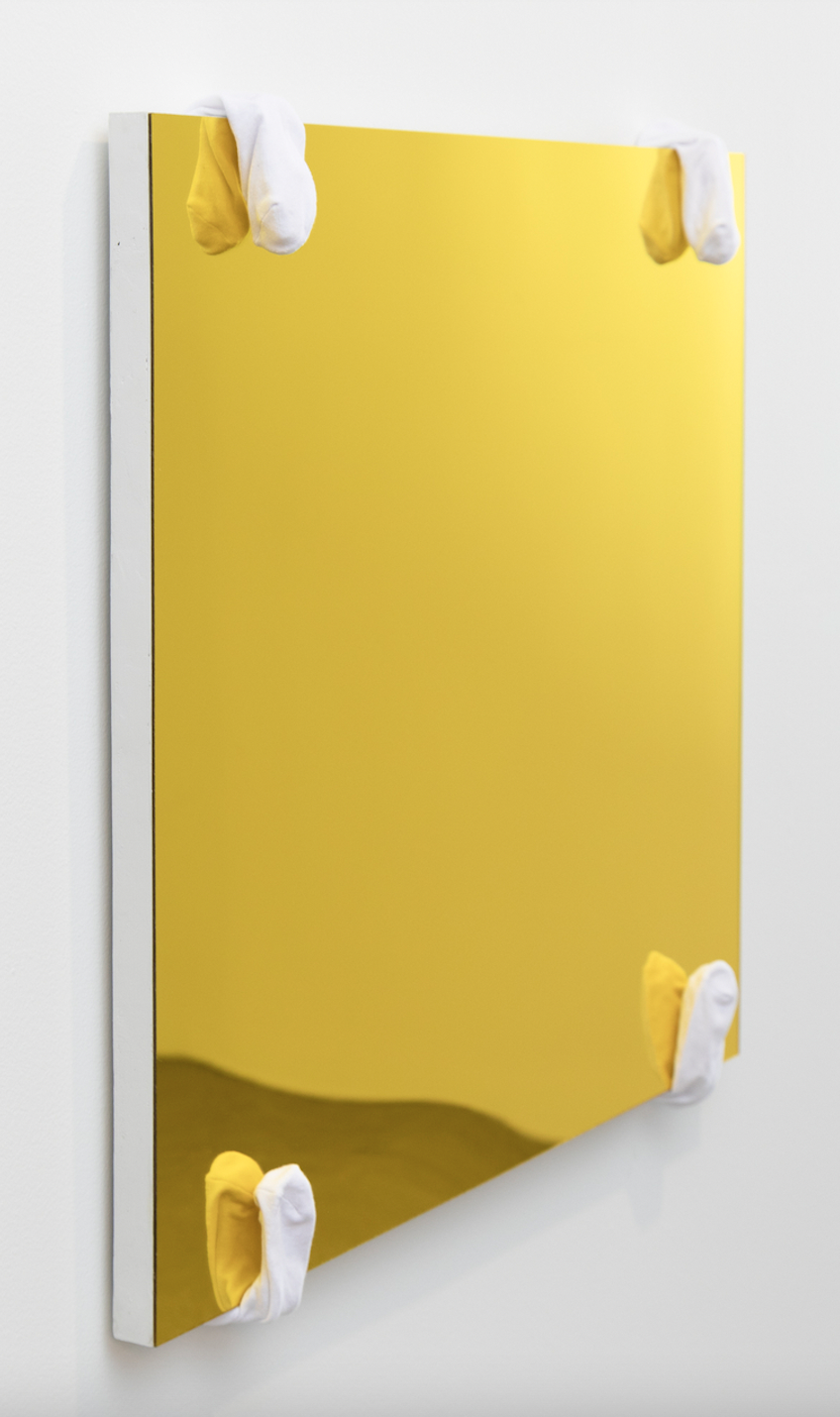
It’s the kind of memorable moment designed to cut through at the top end of the market.
As Mathieson says: “Quite often what happens when there’s a display suite for a project, or even when a project is finished, either it’s left empty or it’s furnished with rental items, and you end up with a bad reproduction poster on the wall; it’s all very generic. The Kurraba project was unusual in that the developer, I think partly because of the market that they were going after and the calibre of the location and the apartment itself, saw the value in buying furniture -— and therefore the natural extension of that was to fully provide the experience of how someone might live.
“The art is part of that.”
Lachie Gibson, founder and CEO of Melbourne developer ANGLE, agrees. His outfit prides itself on providing a holistic package of high quality location, architecture, landscape and interiors — and he sees art as a “crucially important” extension of that. ANGLE champions Australian creatives, partnering with emerging talent (including furniture designer Thomas Lentini, before he broke into the big league) and local heroes such as Dinosaur Designs, design firm Flack Studio, commercial galleries and Artbank, to create distinctive interiors for their high-end residential developments, including the multi-award-winning Fenwick, in Kew.
“We’ve had success over the yearsselling off the plan, but at the end of a project you might have a $6 million penthouse [not yet sold] and so you’re styling it for sale — and the difference between the kind of generic property stylist that the real estate companies use and partnering with someone like Artbank, is huge,” Gibson says.
Even when apartments are sold off the plan, ANGLE typically brokers relationships between buyers and interior designers, who will then do a full furniture and art fit out. “Obviously it’s awesome for the client — it elevates their space and makes it feel incredible. But also for us as a developer, the photographs of those completed spaces become almost our number one marketing tool,” Gibson says.
“It’s pretty easy to go and render something up, but having a built space that’s got amazing artwork is hugely advantageous to us.”
For their latest development, Fenhurst, ANGLE is partnering with Artbank to select hero pieces for the common areas, and with Melbourne gallery Daine Singer for apartment artworks — which will be shown in marketing renders, but available to see in the flesh (and purchase) from the developer’s Harold Street Gallery: a multi-purpose space in Camberwell that was designed by Fleur Sutherland and showcases ANGLE’s regular collaborators alongside a rotating selection of pieces from Artbank and Craft Victoria.
It’s not just developers harnessing art for a competitive edge. When Simon Hakim, CEO of creative agency Hunter, and his wife decided to put their stunning home “Rail House” in Melbourne’s Northcote on the market, they knew they needed art for the massive walls in their central living area.
“Over the years, we’d been talking about putting artwork up there, and had a built-in rail installed specifically for art [but] we couldn’t ever decide on what we liked,” he says. Then a neighbour introduced Hakim to Artbank, which has short and long-term and annual leasing plans that range from $165 to $5500 per annum.
“It was a really good way to test out the art wall — and to see massive works that we were able to display [on the rail] but couldn’t afford,” Hakim says.
In the end, they leased a series ofprints by photographer Bill Henson.
“It filled an empty void; it made a huge impact on the house. [And] we had a lot of comments about the work [from prospective buyers],” says Hakim.
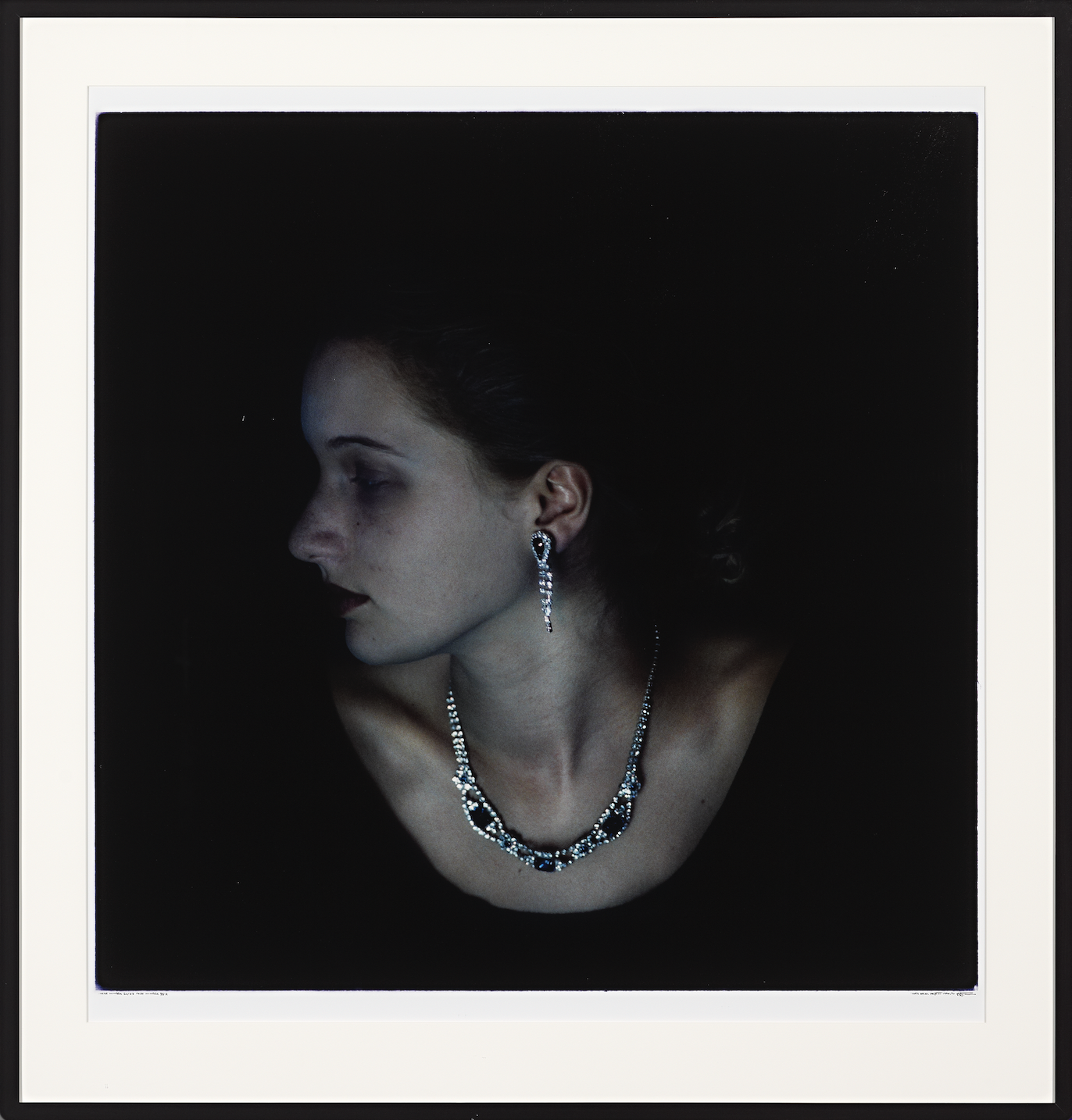
Sydney property agent Georgia Cleary, of McGrath Paddington, says there’s an increased appreciation of art across the market these days, and in the prestige end of the market in particular: “People will pay tens of thousands of dollars to style their properties, and you can’t put prints into those homes.”
McGrath generally asks stylists not to put art on the walls, and instead partners with local artists and galleries to select high-end pieces. “We’ve found that the market responds really well to original works [rather than reproductions or prints],” says Cleary. “It elevates the perception of the property as ‘prestige’.”
Article originally published on Kanebridge News Australia
Miles from home and in lockdown with family, the designer took inspiration for his new sofa from an unlikely source
While the rest of the world was hunkering down in 2020 as the reality of COVID set in, Gabriel Tan was moving house — halfway around the world.
The Singaporean designer and his heavily pregnant wife Cherie Er relocated with their five-year-old son to Porto, on the coast of Portugal. It was a bold move given Tan had an established studio in Singapore, but the couple decided it was worth the risk to be in the heart of the design centres in Europe and the US.
“It was difficult because we had a good business in Singapore and my wife had a really good job — she was running the Asia Pacific sales for Credit Suisse,” he says. “We threw everything in the basket and moved to Portugal.
“We decided that this design business has to work.”
For more stories like this, order your copy of Kanebridge Quarterly magazine here.
By the time Tan, who decided on a career in design while doing his national service in the navy, left for Portugal, he was already a name in Singapore and Japan, first with Outofstock, which he started with two friends, then his own studio before working with Japanese brand Ariake.
“I met them when they were still doing contract manufacturing and they were a local brand that wasn’t even known in Tokyo,” he says. “Originally the plan was just for me to design a few products for them. I told them that’s not going to move the needle for them if you are just going to add my products to your current collection so I suggested something more ambitious.
“I kind of appointed myself as the creative director.”
Origin story
The experience with Ariake spurred Tan onto build his own brand, Origin Made, designing products and taking on interior design projects, but he was keen to continue to extend himself.
Over time, living and working in a country of 5.5 million people was beginning to feel limiting.
With more of his time and attention being directed towards brands in Italy, Scandinavia and the United States, it made sense for Tan to make a permanent move to a location with easier access to Europe as well as North America. It was also an opportunity for a fresh start in design terms.
“I felt I was getting pigeon holed a little bit before COVID because people felt my work was very minimalist Japanese/Scandinavian, but it was because I was designing for Japanese clients,” he says. “When you work with a company, it is 50 percent them and 50 percent you. You bring part of yourself but at the same time, you can’t ignore the brand, their culture and their customers.”
Life in lockdown
Like much of the rest of the world, Portugal was in lockdown when Tan and Er arrived and their rental accommodation was not entirely comfortable for the family. As some work dried up in Singapore, Tan found himself with time to think.
“We were spending a lot of time in front of the TV and we were all wishing we had a more comfortable couch in our apartment,” he says.
“I was still waiting for my home to be finished construction so we were in a very uncomfortable spot.
“I really prioritised comfort when I was designing this sofa so I really went for it and tried to think ‘what is the craziest, most comfortable form we could get’.”
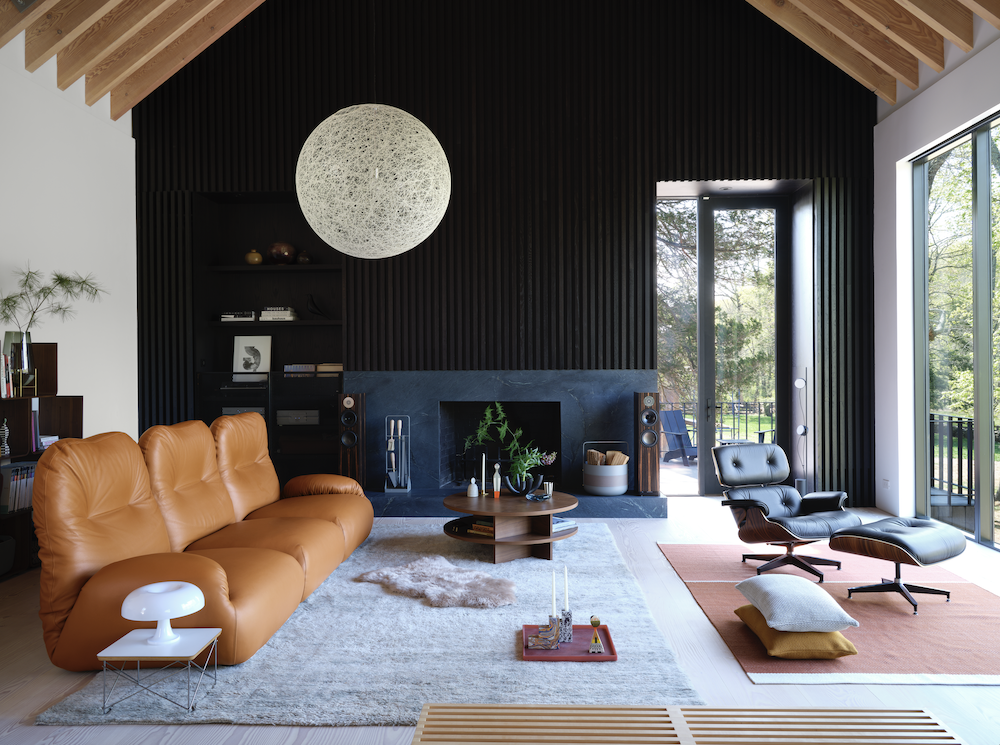
The sofa is the Luva (Portuguese for glove), a modular design taking its inspiration from Japanese futon beds and western boxing gloves. The backrest has the ability to extend for full lounging or to fold down to create a ‘fist’ for more support. It’s a deliberate attempt at cross cultural pollination.
“You have the eastern influence of the futon and the western sport of boxing and I tried to get an aesthetic that different cultures would be familiar with whether they are from Asia, Europe or the US,” he says. “You will find this shape is familiar to you and you will be naturally drawn to it.”
Build your own
While the lounge is in keeping with a contemporary aesthetic and comfort levels, it also embodies the practicality that is an integral part of Tan’s approach. Each piece is available individually, allowing the user to ‘build’ the lounge to suit their needs, whether they live in a large house or a small apartment.
“I have lived in apartments all my life,” he says. “You can see how narrow the stairwells can be, and you have to carry the sofa up.
“Whenever we are doing interior design for clients we know the consideration when you’re buying a sofa. If it’s modular, if you can get it through doorways and narrow hallways, it’s going to be much easier to convince the client to buy.”
It’s also a design that the user can add to over time, extending the usefulness and longevity of the sofa. Tan took it to product design director at Herman Miller, Noah Schwarz, who was quick to recognise its applications.
“He would often ask what I was working on so I showed him this sofa and immediately he was like ‘this could be something for us’,” says Tan.
“He thought it might be something for the MillerKnoll group but which brand he couldn’t tell yet.
“But he said ‘definitely don’t show it to other people’.”
The Luva has since been joined by the Cyclade tables, a trio of coffee and occasional tables designed to work equally well together or singularly. Other collaborations have followed, including work with major European brands such as B+B Italia, Menu, Abstracta and Design Within Reach while still maintaining his Singaporean office.
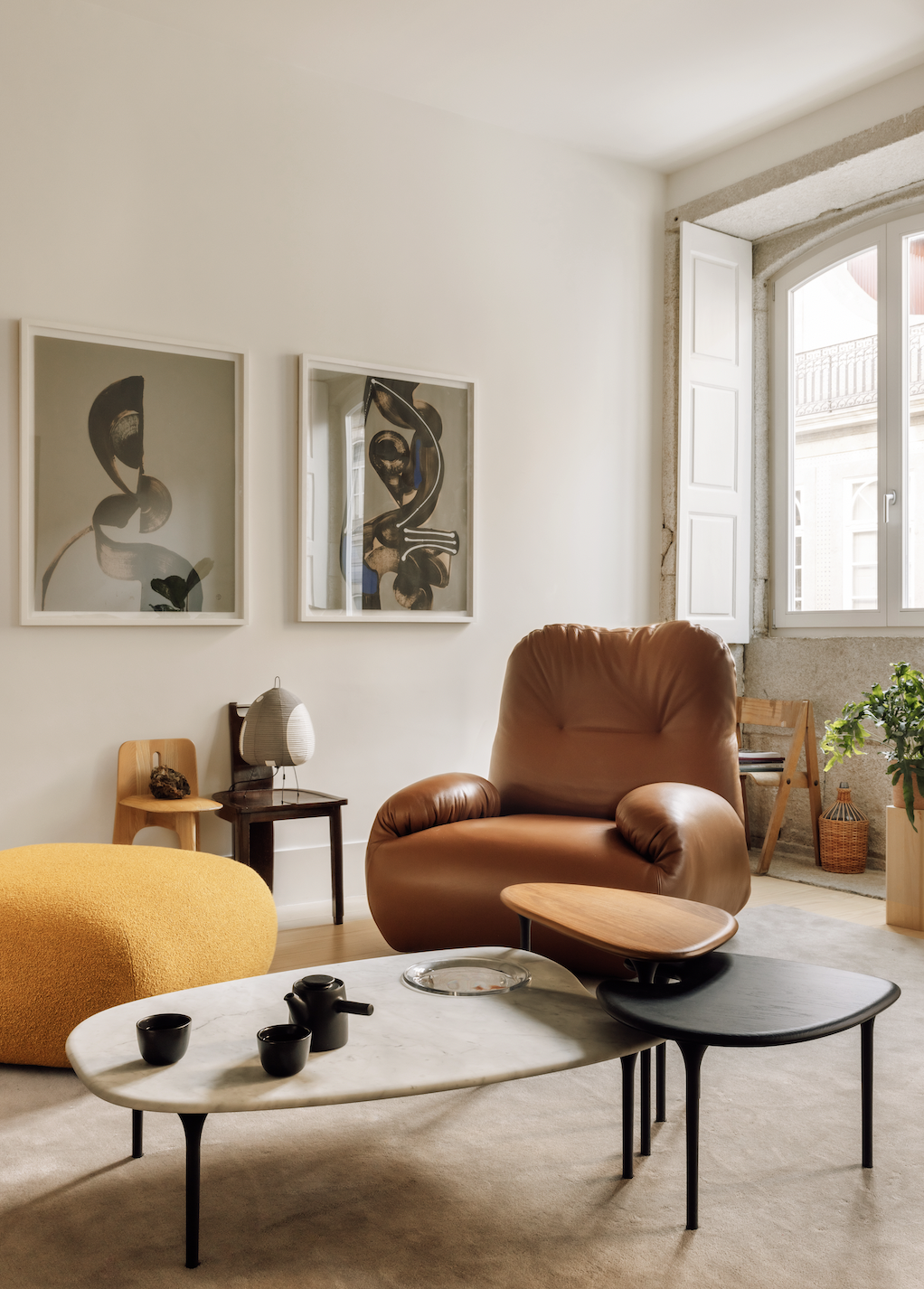
Cutting down travel times has meant more time on the ground.
“Here I travel quite a lot to meet with different companies I am working with and that helps because to me these distances are super short,” he says. “For designers living in Europe they might not want to go to Denmark because it’s a 3.5 hour flight but to me, even if I have to transit, five hours is no problem.”
Leap of faith
Although the move to Europe was risky, Tan has no regrets. While he admits his Portuguese is still a work in progress, his two sons (Er delivered a baby boy not long after arriving in Portugal) are quickly learning the language and the family has now moved into a traditional townhouse, which Tan has renovated, and where their office is based.
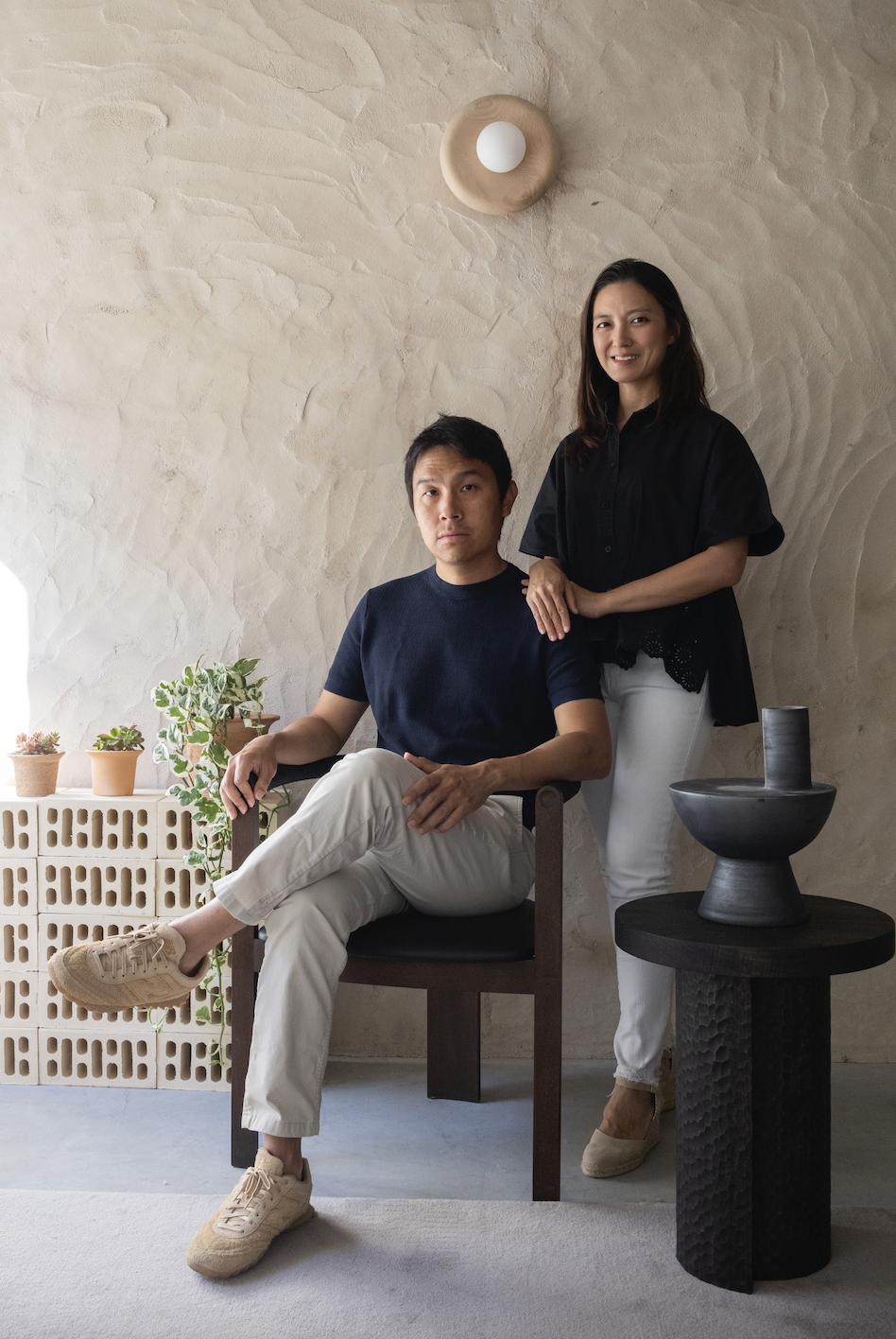
Being in the heart of Europe has opened up a world of opportunity for Tan that has been both invigorating and challenging.
“I am designing for companies of different countries and I get to learn more about other ways of life and how people from other countries see design and see their homes and their spaces and how people do business in different parts of the world,” he says. “Coming from Singapore, it can be very stifling because it is so small. It’s really such a joy to experience these different cultures through design collaborations.”
Moving away from family and friends was a leap of faith but it gave him the push he needed. For a designer whose work is all about comfort, he is not one taking the safe path and staying home.
“It’s a good business model for revenue but you are not going to leave a mark on design history, you are not going to touch the lives of that many people if you are working with regional brands,” he says. “I really wanted to work with the international brands that have the reach with customers worldwide and I think if I hadn’t moved I would not have had that clarity of mind and that focus to really go for it.”
Article originally published on Kanebridge News Australia